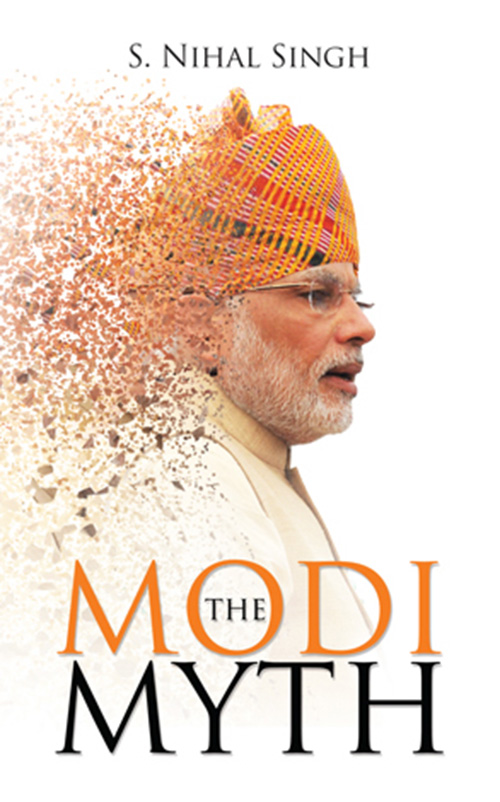As finance minister Arun Jaitley prepares to present his first Union Budget on July 10, there are two big question marks hanging over his head like a Damocles sword. The problem is that neither he nor any of us have precise answers to these questions.
Depending on what the answers are, the Budget could be described as “soft”, “hard”, “conservative”, “forward looking” or just a “holding operation” for the next eight months. The first question: How deficient is the monsoon going to be? The second question: Will international prices of crude oil flare up in the wake of the ongoing unrest in Iraq and if so, to what extent?
The coming Budget could well be a holding operation of sorts as all such Budgets have been in the recent past — for instance, the ones presented in 1996, 2004 and 2009 — when new governments have come to power. The exception was the Budget that was presented in July 1991 by Manmohan Singh after he became finance minister in the P.V. Narasimha Rao government. This was one Budget that deregulated the working of the Indian economy and ushered in what is today described as the phase of economic liberalisation, marking a break from the days of the licence-control raj — though this transition had been in the making for some years earlier.
In 1991, the Budget was presented soon after the rupee was drastically devalued vis-a-vis the US dollar after a period when the country’s foreign exchange reserves had plummeted to extremely low levels. As a matter of fact, the political uncertainty that had preceded the presentation of the Budget — the fall of the V.P. Singh government, the short-lived Chandra Shekhar regime and the assassination of Rajiv Gandhi in June that year — had created a situation in which non-resident Indians had withdrawn their deposits, the country’s foreign currency reserves had come down to barely a fortnight’s import requirements and there was a real and present danger that the government of India could default on its external financial obligations.
The country’s economy has come a long way since those days 23 years ago. But that does not mean the economic uncertainties that are facing India can be pooh-poohed as being potentially less ominous. That would indeed be a complacent position to adopt. Consider the deficiency in the monsoon. Roughly 60 per cent of the total cropped area of the country is not irrigated. This means that if the absolute quantum of rainfall is less than normal and, more importantly, the spread of precipitation is uneven across some of the more agriculturally prosperous parts of India, the drought-like situation is bound to exert strong upward pressures on food prices.
Once again, from the finance minister to the farmer in the field, everyone is praying to Lord Indra with folded hands. Whereas the whimsical ways of the monsoon (with the El Nino factor as an additional source of uncertainty this year) are unlikely to create widespread food shortages in the country given our comfortable stocks of wheat and rice, what does happen is that the possibility of a fall in farm output invariably raises inflationary expectations. That has already started taking place — the spike in onion prices being one example.
Agriculture may account for less than 15 per cent of India’s gross domestic product (GDP) at present, but at least half the country’s total population is still directly dependent on this sector for their livelihoods. In other words, while a fall in farm output will have a relatively small impact on the overall rate of growth of GDP, it could result in a sharper decline in agricultural incomes, thereby adversely affecting demand from rural areas for a wide range of articles of mass consumption, including consumer durables. This, in turn, would check attempts to revive GDP growth.
The other area of uncertainty which holds the possibility of playing havoc with the country’s current account deficit on its external balance of payments — that is, the gap between inflows and outflows of foreign currency — is something over which no one here has any control, which is world prices of crude oil. India is particularly vulnerable on this front because the country is currently importing as much as 80 per cent of its total requirements of crude oil. Oil imports account for approximately a third of total imports and around a third of the country’s import crude oil come from countries located in and around the Persian Gulf region in West Asia.
The civil war in Iraq may not subside in a hurry. International oil prices have already crept up to around $115 a barrel. If the conflict between the Sunni Arab-led Islamic State of Iraq and al-Shams (ISIS) and the discredited government in Baghdad led by Nouri al-Maliki does not end soon, with or without intervention from America, Russia, Iran and perhaps even Saudi Arabia, the chances of the troubled country imploding cannot be ruled out. If that indeed happens, none will be able to anticipate where world oil prices will go.
India has been particularly fortunate that crude oil prices have been benign over the last few years. This has enabled the government to completely decontrol prices of petrol and allow the officially-administered prices of high-speed diesel to go up gradually over recent months. A few weeks ago, it appeared that if diesel prices went up by a rupee or two per litre over the next few months, domestic prices of this fuel — the most-widely used among all petroleum products — would become more or less on par with international prices. With crude prices having gone up already, the government’s plans of cutting the subsidy on diesel may not materialise soon.
In addition, the government’s decision to defer by three months its decision to hike the price of natural gas will imply that the implicit subsidy on power generation as well as the subsidy on production of fertilisers could rise considerably. Mr Jaitley will certainly have to factor these possibilities into his Budget calculations. If, on top of this, he intends ending the previous government’s proclivity to postpone passing on subsidies to public sector oil marketing and refining companies as well as fertiliser companies, it will be next to impossible for the finance minister to contain the fiscal deficit (which is an indication of the difference between the Union government’s total earnings and its total expenditure).
The options before Mr Jaitley are few and the choices limited.


